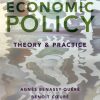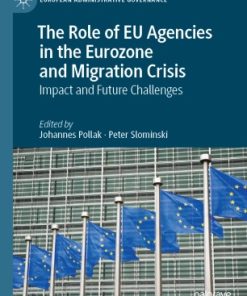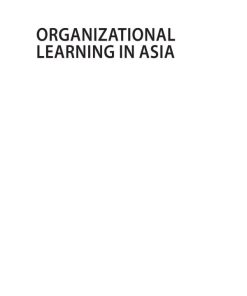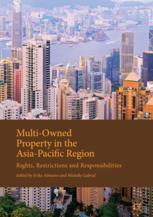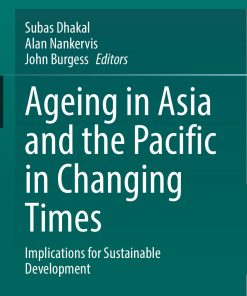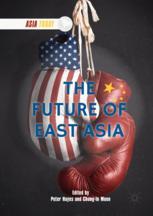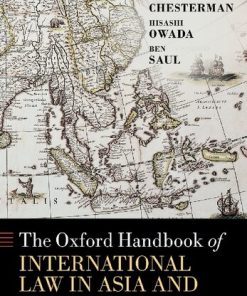The Changing Face of Corruption in the Asia Pacific Current Perspectives and Future Challenges 1st Edition by Chris Rowley, Marie dela Rama 0081012306 9780081012307
$50.00 Original price was: $50.00.$25.00Current price is: $25.00.
The Changing Face of Corruption in the Asia Pacific. Current Perspectives and Future Challenges 1st Edition by Chris Rowley, Marie dela Rama – Ebook PDF Instant Download/DeliveryISBN: 0081012306, 9780081012307
Full download The Changing Face of Corruption in the Asia Pacific. Current Perspectives and Future Challenges 1st Edition after payment.
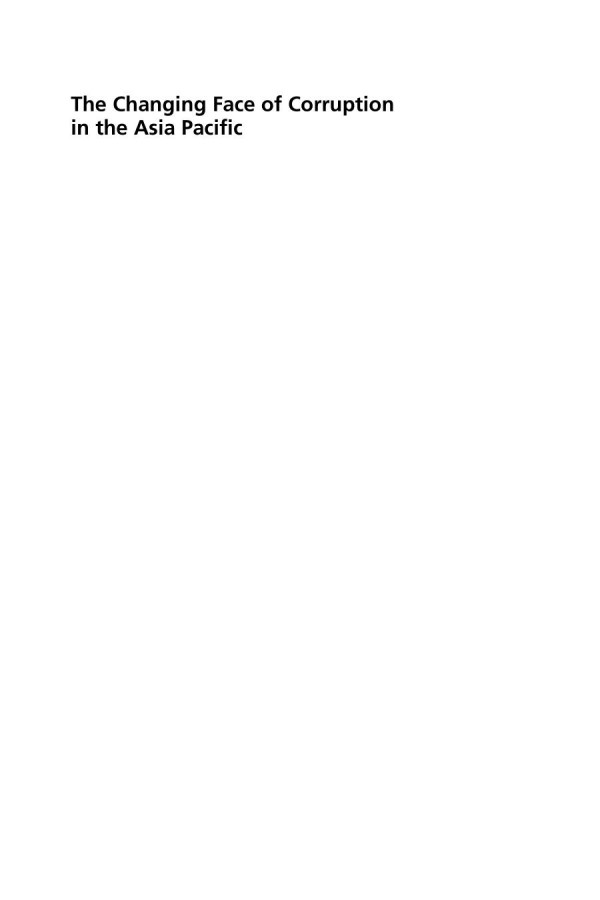
Product details:
ISBN-10 : 0081012306
ISBN-13 : 9780081012307
Author : Chris Rowley, Marie dela Rama
The Changing Face of Corruption in the Asia Pacific: Current Perspectives and Future Challenges is a contemporary analysis of corruption in the Asia-Pacific region. Bringing academicians and practitioners together, contributors to this book discuss the current perspectives of corruption’s challenges in both theory and practice, and what the future challenges will be in addressing corruption’s proliferation in the region.
The Changing Face of Corruption in the Asia Pacific. Current Perspectives and Future Challenges 1st Table of contents:
1. The changing face of corruption in the Asia-Pacific Region: Its discontents, current perspectives, and future challenges
Abstract
1.1 Introduction
1.2 Part 1: Theoretical discourse on corruption
1.3 Part 2: Country case studies—corruption around the region
1.4 Part 3: Future challenges
1.5 Conclusion
References
Part I: Theoretical Discourse
2. Political finance and corruption in Southeast Asia: Causes and challenges
Abstract
2.1 Introduction
2.2 The costs of competition
2.3 Corruption as a result
2.4 Factors for rising costs and corruption
2.5 Initiatives for reform
References
3. The effect of corruption on foreign direct investment inflows: Evidence from a panel of Asia-Pacific countries
Abstract
3.1 Introduction
3.2 Corruption and FDI: a brief literature review
3.3 Corruption and FDI trends in Asia and the Pacific
3.4 Data, methodology, and estimation strategy
3.5 Results and discussions
3.6 Conclusion
References
4. The role of multinationals in corruption in the Asia-Pacific region
Abstract
4.1 Introduction
4.2 Supply-side and demand-side of corruption markets
4.3 Patterns of country corruption in the Asia-Pacific region
4.4 Recent instances of MNE misconduct in Asia-Pacific countries
4.5 Conclusion
References
5. Private and public corruption: Facilitating payments
Abstract
5.1 Introduction
5.2 Facilitating payments
5.3 Why is there petty corruption?
5.4 The ethical dimension of facilitating payments
5.5 The fight against petty corruption
5.6 Conclusions
References
6. It Takes Two People to Tango (or more!): The corrupt and debased culture of neoliberalism
Abstract
6.1 Introduction
6.2 Corruption as a moral deflection device?
6.3 Neoliberal orthodoxy
6.4 Conclusion
References
7. Corruption, corporate governance, and building institutions in the Asia-Pacific
Abstract
7.1 Corruption
7.2 Unpredictable corruption
7.3 Low-level opportunistic payoffs or petty corruption
7.4 Grand or systemic corruption
7.5 Corruption and poverty
7.6 Corporate governance
7.7 Building corporate governance institutions
7.8 Institutions and economic development
7.9 Politicized institutions
7.10 Corporate governance and corruption
7.11 Conclusion
References
Part II: Country Case Studies
8. 27 Years of fraud control in the New South Wales public sector: 1989–2016
Abstract
8.1 Introduction
8.2 Public management 101
8.3 Establishing a policy on fraud prevention – first origins
8.4 First attempts at implementation
8.5 Embedding a testing methodology
8.6 Light on the hill
8.7 Ethical framework
8.8 Future directions and expectations
8.9 Responsibility structures
8.10 Conclusion
Further reading
9. Money laundering activities in Australia—an examination of the push and pull factors driving money flows
Abstract
9.1 Introduction
9.2 A typology of money laundering
9.3 Calibrating the effects of the push and pull factors on money laundering activities
9.4 Methodology
9.5 Results
9.6 Conclusion
Appendix A – 144 countries
References
10. Corruption in New Zealand: A case of reputational erosion?
Abstract
10.1 Introduction
10.2 New Zealand, the Corruption Perceptions Index, and changing national perceptions
10.3 A challenge to complacency? policing, transparency, and international trusts
10.4 Ratifying the UNCAC: why so long?
10.5 How does change for the worse occur?
10.6 Conclusion: a need for more scrutiny and less complacency
Endnotes
References
11. The limits of anticorruption in China
Abstract
11.1 Introduction
11.2 Institutional and legal frameworks
11.3 Selective anticorruption
11.4 Conclusion
References
12. Governance gridlocks and ubiquitous corruption: Charting causes, costs, and consequences of corruption in India
Abstract
12.1 Low governance and high corruption – inextricably interlinked
12.2 State capture
12.3 Culture
12.4 Unbridled corruption in India
12.5 Diagnostic study of corruption in India
12.6 Bureaucratic corruption
12.7 Political corruption
12.8 Appraising the impact of corruption on Indian economy
12.9 Measures against corruption
References
13. Competing for public acquaintances: The case of the Reliance group in India
Abstract
13.1 Introduction
13.2 The rise of a conglomerate in a changing environment
13.3 The levers of Reliance expansion
13.4 Conclusion
References
14. Corruption in Vietnam: The current situation and proposed solutions
Abstract
14.1 Definitions
14.2 The characteristics of corruption
14.3 The acts of corruption under the provisions of the current law
14.4 Current situations of corruption in Vietnam
14.5 Solutions to prevent corruption
14.6 Conclusion
References
15. Corruption in Myanmar: Insights from business and education
Abstract
15.1 Antecedents: culture, development, and rule
15.2 Organizational manifestations
15.3 Looking forward
References
16. From credible threats to credible commitments? the changing face of South Korean corruption
Abstract
16.1 Introduction
16.2 Why no credible commitment?
16.3 Understanding postmiracle corruptions
16.4 How to dismantle credible threats: suggestions
16.5 Conclusion
References
17. Indonesia’s anticorruption campaign: Civil society versus the political cartel
Abstract
17.1 Introduction
17.2 Anticorruption reform
17.3 Political cartel
17.4 Resistance against KPK
17.5 Enabling factors of civil society success
17.6 Conclusion
References
18. The road to nowhere: The rise of a neo-patrimonialist state in East Timor
Abstract
18.1 Introduction
18.2 Background
18.3 Political transformation
18.4 The emergence of a clientelist state
18.5 The centralization of power
18.6 Rational-legal institutions
18.7 The road to nowhere
18.8 Made in Jakarta?
18.9 Conclusion
References
19. The politics of Australian anticorruption policy to Papua New Guinea
Abstract
19.1 Introduction
19.2 Promises, promises: Australia’s new aid/anticorruption paradigm
19.3 The politics of corruption and anticorruption in PNG
19.4 Australia’s response
19.5 International and local responses
19.6 Conclusions
References
Part III: Future Challenges
20. Business feeling the strain: The changing world of anticorruption and beyond
Abstract
20.1 Introduction
20.2 Background—where it all began
20.3 Next step—exporting the foreign bribery prohibition
20.4 What does this mean for business?
20.5 But wait, there’s more
20.6 Conclusion
References
21. Is it as simple as ABC? a practitioner’s perspective on anti-bribery compliance
Abstract
21.1 Introduction
21.2 The heterogeneous private sector
21.3 International guidances
21.4 Organizational leadership and culture
21.5 The importance of governance arrangements to compliance
21.6 Corruption risk assessments
21.7 Dealing with gifts and entertainment
21.8 Third parties
21.9 Facilitation payments
21.10 Clear communication and training strategies
21.11 An ethical organization
21.12 Organizational response to bribery allegations
21.13 Conclusion
Endnotes
References
22. Petty corruption in developing countries: Here for the long term
Abstract
22.1 Introduction
22.2 Low civil service salaries
22.3 Inadequate legal structures and services
22.4 Poorly drafted legislation, regulations, and procedures
22.5 Conclusion
References
23. Corruption in the family: Financial abuse of older people in Australia
Abstract
23.1 Introduction
23.2 Definition of corruption in the family
23.3 Defining financial abuse of the elderly
23.4 Size of the problem in Australia
23.5 The mechanisms of corruption
23.6 Examples of corruption against older people
23.7 Difficulties in detecting abuse
23.8 Inadequacies in the current system and possible mechanisms for overcoming corruption against older Australians
23.9 Education and public awareness campaigns
23.10 Mandatory response
23.11 Whistle-blower legislation
23.12 Guardianship and enduring power of attorney
23.13 Conclusion
References
24. Moral corruption in a climate of vulnerability: Assessing COP21
Abstract
24.1 Introduction
24.2 The perfect moral storm of climate change and moral corruption
24.3 The Paris Agreement
24.4 Vulnerability and moral discord
References
25. Future directions for research into corruption and anticorruption practice
Abstract
25.1 Introduction
25.2 Political corruption
25.3 Institutions and bureaucratic corruption
25.4 Civil society and technology
25.5 The role of business
25.6 Conclusion
People also search for The Changing Face of Corruption in the Asia Pacific. Current Perspectives and Future Challenges 1st:
corruption in the asia–pacific region
the asia-pacific journal japan focus
the changing face of poverty
corruption in asia
the asia-pacific journal
Tags: The Changing Face, Corruption, the Asia Pacific, Current Perspectives, Future Challenges, Chris Rowley, Marie dela Rama
You may also like…
Politics & Philosophy
Education Studies & Teaching
Organizational Learning in Asia. Issues and Challenges 1st Edition Edition Jacky Hong
Politics & Philosophy
Uncategorized
Ageing Asia And The Pacific In Changing Times Implications For Sustainable Development Desconocido
Politics & Philosophy
Jurisprudence & Law - Foreign & International Law
The Oxford Handbook of International Law in Asia and the Pacific 1st Edition
Politics & Philosophy


